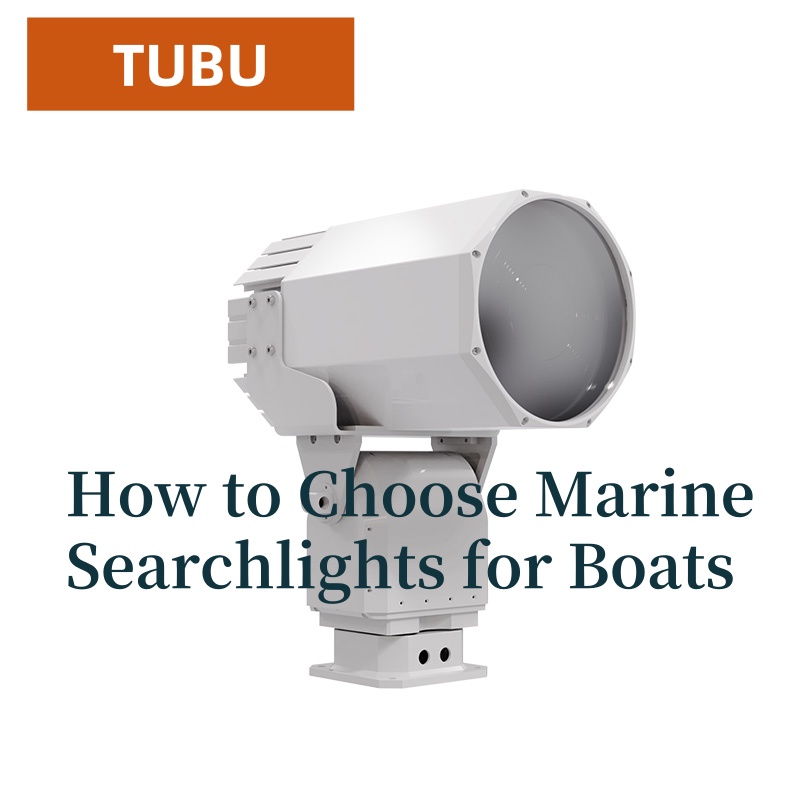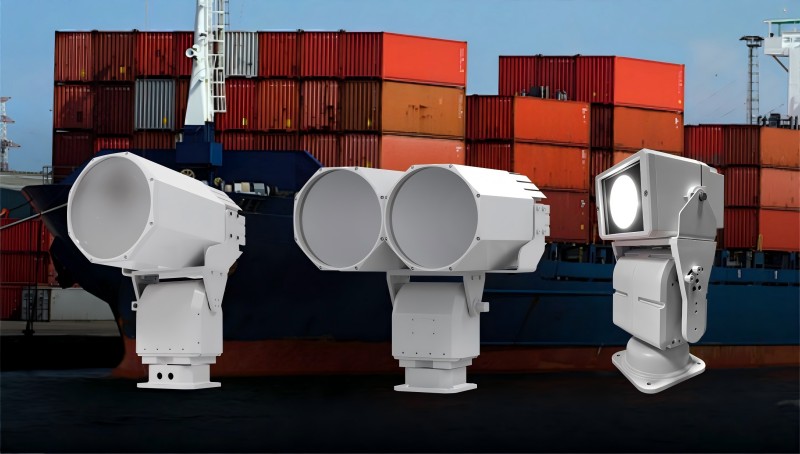When selecting LED marine searchlights, several factors need to be considered to ensure that the performance, durability, and suitability of the fixture meets the requirements of the vessel and the navigational environment. Here are the key elements when choosing Marine Searchlights. Let's take a look.

Light intensity and exposure distance
Luminous Intensity (Brightness): The light intensity of a searchlight is usually measured in “lumens” (lumens). Intense search lights are suitable for situations where long distance illumination is required, such as night navigation, bad weather or search and rescue operations. Selection is based on the purpose of the vessel and the range of illumination required.
Illumination distance: Different search lights have different illumination distances, usually between 100 meters and 2000 meters. When choosing, you need to consider the irradiation range according to the environment and the use of the vessel, to ensure that the obstacles or targets can be clearly illuminated even in a long distance environment.
Waterproof rating (IP rating)
IP65 or IP66 waterproof performance is usually applied to marine search lights to ensure that the lamps can work properly in rain, snow or seawater environments. The higher the waterproof rating, the more reliable the luminaire will be in wet and extreme weather.
It is important to choose a luminaire that is adapted to different marine environments, especially in rough sea conditions and frequent exposure to seawater.
Beam types
Focused beam: This type of beam is suitable for long-distance illumination, and is suitable for long-distance target illumination while sailing.
Flood beam: Suitable for closer illumination, such as berthing, deck operations or offshore navigation.
Adjustable Beam: Many marine searchlights support an adjustable beam angle that can be adjusted from a focused beam to a flood beam as needed, increasing flexibility of use.
Luminaire Type and Mounting
Fixed vs. Adjustable: Choosing an adjustable angle fixture allows the crew to adjust the direction of illumination as needed. Fixed mount fixtures are typically mounted on the bridge, bow or stern of a boat.
Manual vs Motorized Swivel: Some marine search lights support motorized swivel, which allows you to remotely control the direction of the beam for greater ease of use. Manual swivel fixtures are usually cheaper but have simpler features.
Bracket type: When choosing a bracket and mounting method, consider the stability and adaptability of the light on the hull. Commonly, there are bracket type, pedestal type, hanging type and so on.
Power and power supply
Power: The power of a searchlight directly affects its brightness and energy efficiency. Higher power (e.g., 100W, 200W or even higher) is suitable for scenarios requiring long-distance lighting, while lower power (e.g., 50W) is suitable for close-range lighting or applications with higher energy-saving requirements.
Power Requirements: Marine search lights are usually available in 12V, 24V or 220V versions, and the choice needs to be made to ensure that the fixture is compatible with the boat's electrical system. If your boat is a small vessel, you may need to select a 12V or 24V version, while larger vessels may require a 220V or higher voltage version.
Bulb Types
Halogen bulbs: Traditional halogen bulbs typically offer higher brightness, but have high power consumption, high heat, and a shorter lifespan.
LED bulbs: LED bulbs are ideal for marine search lights due to their high efficiency, low power consumption, long life (10,000+ hours) and low heat. LED fixtures are also more resistant to vibration and have faster start-up times.
High Intensity Discharge (HID): Provides very high brightness and long range illumination, but is more expensive and requires longer start-up times.
Durability and Materials
Corrosion-resistant materials: Marine search lights need to withstand salt water spray, UV irradiation and high humidity, so it is very important to choose corrosion-resistant materials such as aluminum alloy, marine-grade stainless steel, and other corrosion-resistant materials for lamps and lanterns.
Seismic design: the vibration of the voyage may affect the stability of the lamps and lanterns, choose strong seismic lamps and lanterns to help extend service life, especially in the more adverse sea conditions.

Control mode
Manual control: Simpler marine search lights are usually controlled by a manual switch and are suitable for smaller vessels or for scenarios with limited budgets.
Remote Control: Many modern marine search lights support remote operation, allowing you to adjust beam angle, brightness and other settings via a wireless remote control or onboard control panel.
Auto Mode: Some advanced models also offer an auto control mode that automatically adjusts the beam direction based on boat speed, sailing conditions or needs.
Certifications and Standards
CE certification, ROHS certification and other international standard certifications can ensure the safety and reliability of the product.
Brands and Prices
Choosing a marine search light from a well-known brand usually ensures the quality and after-sales service of the light.Zeconex offers high performance and reliability.
Prices are usually related to features, brightness, durability, control methods, etc. High-end models may be more expensive, but their performance and service life will also be longer.
When choosing the right marine search light, the main considerations are the lamp's brightness, illumination distance, waterproofness, corrosion resistance, mounting method, power requirements, and control method, etc. LED lamps are often the best choice because of their long lifespan, low energy consumption, and high brightness. Make sure you choose a search light that can adapt to your navigational environment, meet your lighting needs, and have a high level of durability and safety.
